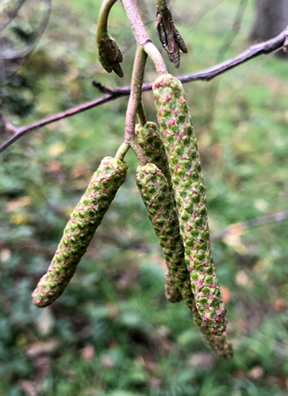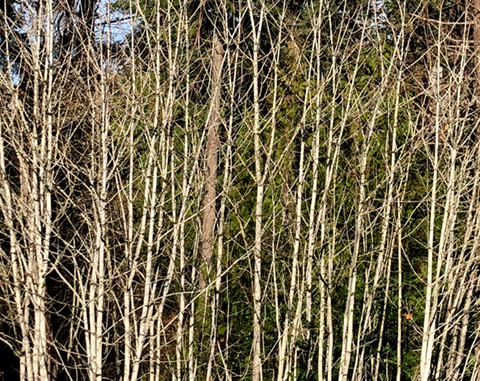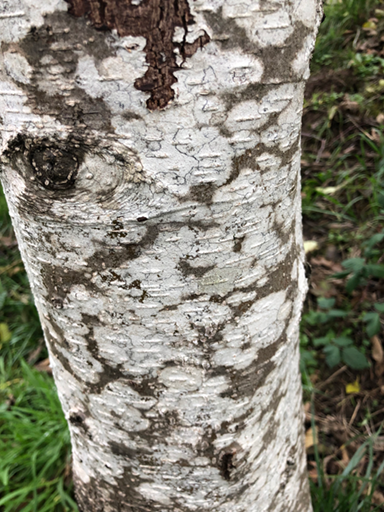Red alders – already dreaming of spring

By Susan Mates

The leaves have fallen, and the woods seem quiet. We tend to cozy up in our homes, and most deciduous trees are dormant too. Their energy lies deep in their roots, as they seem to wait patiently for warmer weather. Not the alders. You may have noticed that they are already sporting catkins.
The short, round cone-like catkins are female, and the male catkins dangle, long and soft, with a lattice pattern across them. These catkins are actually the alder’s flowers. Alders are usually the first trees to grow in a new area, often before the habitat can support a large variety of insects or other animals. These trees depend on the wind to pollinate them, and wind doesn’t require fancy blossoms. These modest flowers will be blooming by February.

Red alders (Alnus rubra) are common in Oregon. In the leafy summer months, they often go unnoticed among the abundance of other leaves. In winter and early spring though, our eyes are drawn to those catkins and to the alder’s distinctive gray-white bark. The thin, smooth bark becomes dappled by lichen as the tree ages.
If you spot an alder, you can safely guess that there is water nearby. Its roots stabilize riverbanks and prevent the soil from being washed away. Its leathery leaves, which have a serrated edge, have sticky buds when they first emerge. The “red” in their name refers to the color of the wood when it is cut.
For wildlife, alders are an important link in the food chain. Their bark is a staple food for beavers who use the branches to build dams. The saplings are a forage food for deer and elk from fall to early spring when other food sources are scarce. Alder roots that sink into creeks and streams shelter fish from predators. And its leaves provide food for invertebrates, such as caddis fly larvae, that in turn are eaten by salmon and other fish. Deer and elk eat the leaves, twigs, and buds of young trees. Leafy stands of Red alder are favorite habitat for deer, especially on hot days in summer and early fall.

One of red alder’s greatest gifts is that they can thrive in areas and soils where other plants struggle, which makes them the first choice for ecological restoration after landslides, logging, or fire. These native trees grow quickly to 30-50 feet high. Their roots fix nitrogen, fostering the growth of nutrients for other plants that follow and longer-lived trees that eventually will shade out the alders.
The next time you pass by an alder, thank it for all that it provides, and admire the catkins that remind us that spring is on its way.
Protecting mature trees is the mission of Treekeepers of Washington County. Contact us or visit our website to find out more.





